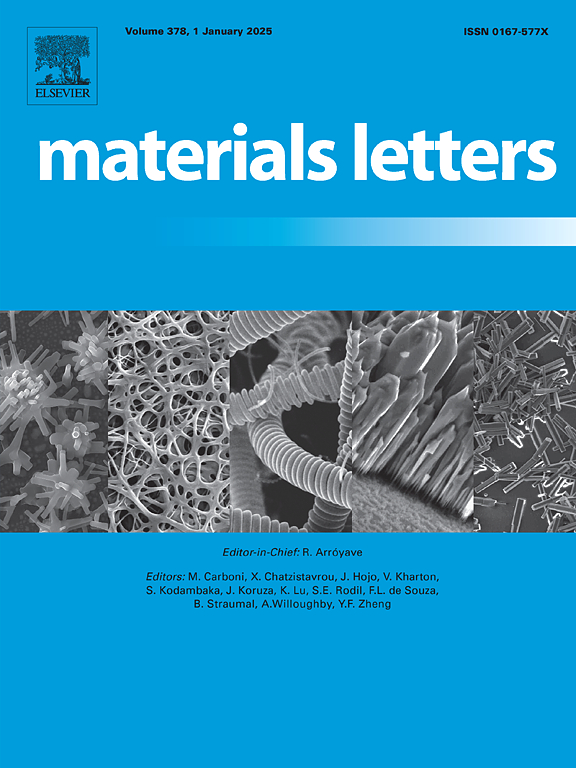Binding ability of phenol formaldehyde derived glassy carbon and its influence on the shaped zeolite
IF 2.7
4区 材料科学
Q3 MATERIALS SCIENCE, MULTIDISCIPLINARY
引用次数: 0
Abstract
Shaped zeolite NaY (NaY-C) with 10 wt% of glassy carbon as binder was prepared via an extrusion-carbonization procedure by using the mixture of NaY and phenol formaldehyde as precursor. Crush strength of NaY-C is 66 N·cm−1, the value of which is comparable with the shaped NaY bound by 20 wt% of alumina. The binding by glassy carbon does not disturb the framework structure, micropore size or guest cation distribution of NaY. Furthermore, the analysis based on a strategy combining Ag+ exchange and ultraviolet-visible diffuse reflectance spectroscopy indicates that as the binder, glassy carbon is more conducive to keep the framework basicity of the zeolite compared with alumina.

求助全文
约1分钟内获得全文
求助全文
来源期刊

Materials Letters
工程技术-材料科学:综合
CiteScore
5.60
自引率
3.30%
发文量
1948
审稿时长
50 days
期刊介绍:
Materials Letters has an open access mirror journal Materials Letters: X, sharing the same aims and scope, editorial team, submission system and rigorous peer review.
Materials Letters is dedicated to publishing novel, cutting edge reports of broad interest to the materials community. The journal provides a forum for materials scientists and engineers, physicists, and chemists to rapidly communicate on the most important topics in the field of materials.
Contributions include, but are not limited to, a variety of topics such as:
• Materials - Metals and alloys, amorphous solids, ceramics, composites, polymers, semiconductors
• Applications - Structural, opto-electronic, magnetic, medical, MEMS, sensors, smart
• Characterization - Analytical, microscopy, scanning probes, nanoscopic, optical, electrical, magnetic, acoustic, spectroscopic, diffraction
• Novel Materials - Micro and nanostructures (nanowires, nanotubes, nanoparticles), nanocomposites, thin films, superlattices, quantum dots.
• Processing - Crystal growth, thin film processing, sol-gel processing, mechanical processing, assembly, nanocrystalline processing.
• Properties - Mechanical, magnetic, optical, electrical, ferroelectric, thermal, interfacial, transport, thermodynamic
• Synthesis - Quenching, solid state, solidification, solution synthesis, vapor deposition, high pressure, explosive
 求助内容:
求助内容: 应助结果提醒方式:
应助结果提醒方式:


